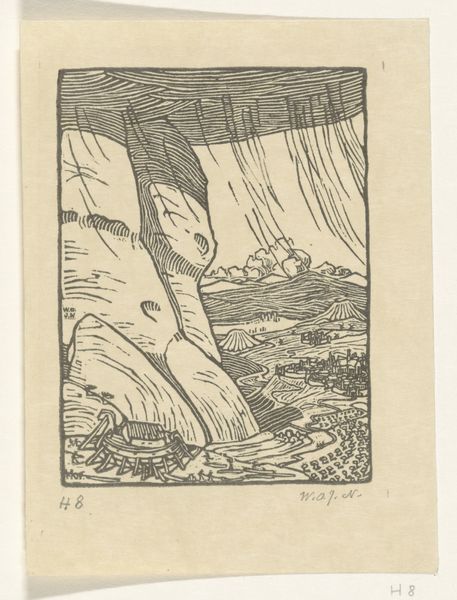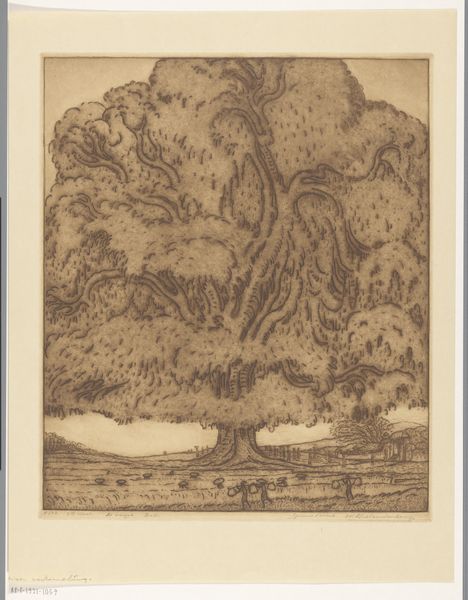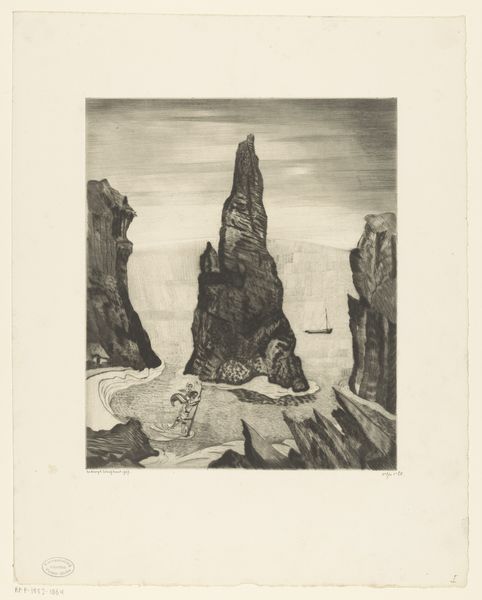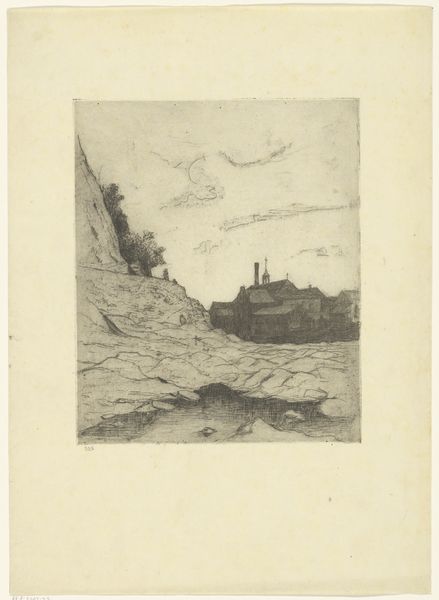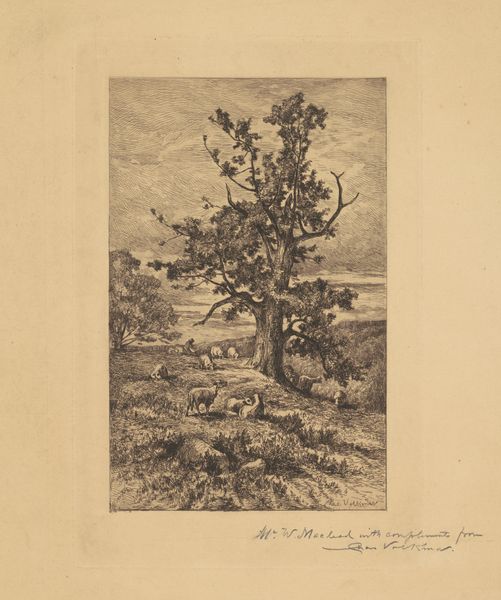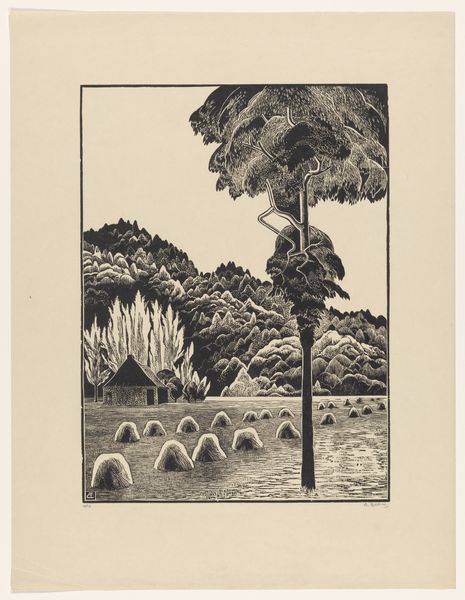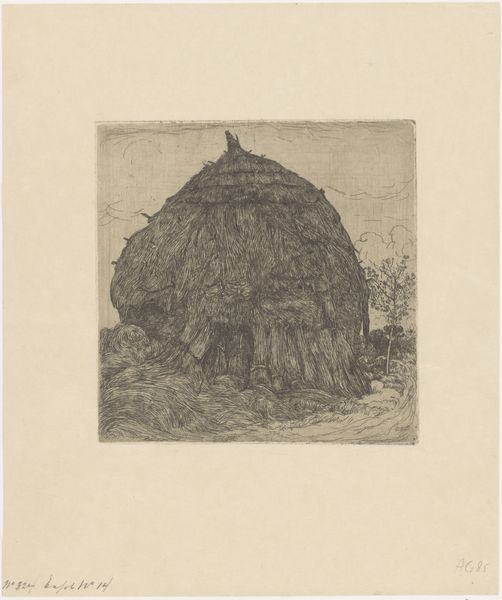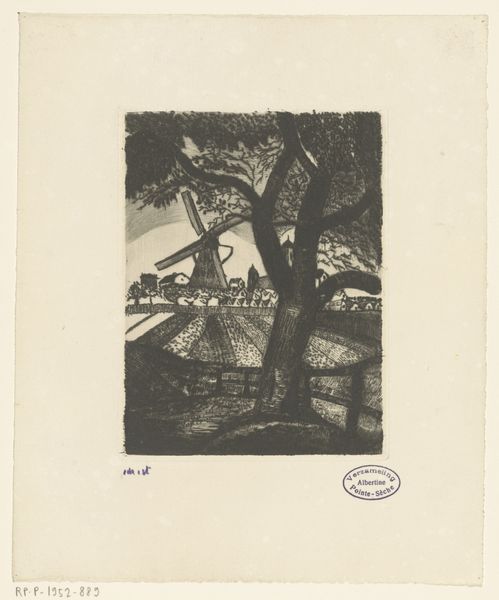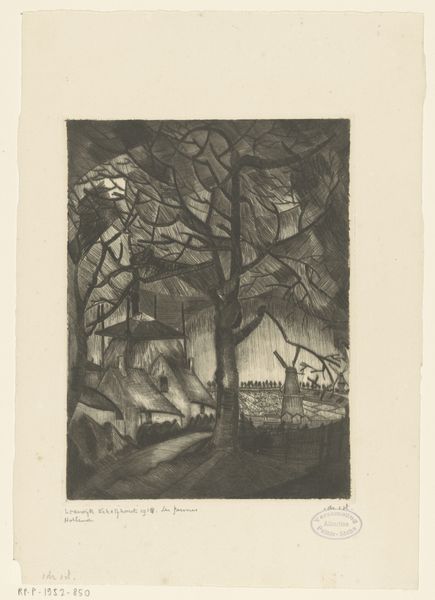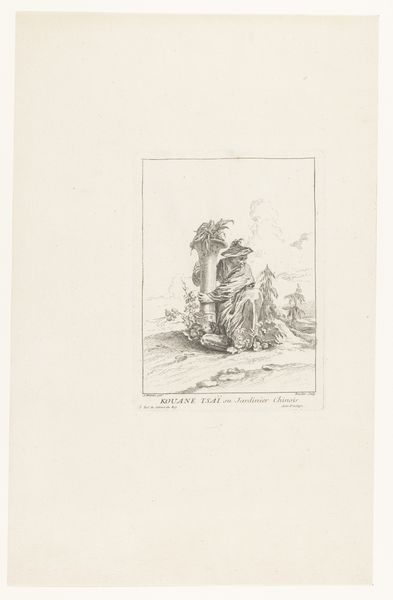
drawing, print, woodcut
#
drawing
# print
#
landscape
#
woodcut
Dimensions: height 179 mm, width 121 mm
Copyright: Rijks Museum: Open Domain
Editor: This is "Cities Under a Cedar in a Mountainous Landscape" by Wijnand Otto Jan Nieuwenkamp, a woodcut print made sometime between 1900 and 1905. It has a kind of fantastical, almost allegorical quality. What strikes me is the strange inversion of nature – the tree feels more substantial than the settlements beneath it. What do you see in this piece? Curator: It’s interesting you pick up on that inverted hierarchy. Given the time it was created, in an era of increasing industrialization and urbanization, this woodcut could be seen as a commentary on humanity's relationship with nature. Notice how the cedar tree, deeply rooted, almost seems to cradle or perhaps even *threaten* the settlements. How might we interpret that juxtaposition? Editor: Threaten? I was thinking protect, like it was nurturing the city under its branches. Curator: I can see that perspective. But let’s consider the inscription from Ezekiel. In that biblical passage, the cedar tree is a metaphor for power and pride that is ultimately felled. The image raises the question, does this nurturing imply a controlling dominance? Consider also, what narratives might be silenced or marginalized when we romanticize a vision of the natural world? Editor: So, the print might not just be a pretty landscape; it could be critiquing power dynamics or warning against unchecked human ambition and its impact on the environment? Curator: Precisely. Nieuwenkamp places us in a position to question those dynamics and our place within the natural world. It asks us to consider the ethics of our interaction with the environment. Editor: Wow, I didn’t expect to go that deep. I just thought it was a nice picture of a tree! Curator: Art has a wonderful way of surprising us.
Comments
No comments
Be the first to comment and join the conversation on the ultimate creative platform.

